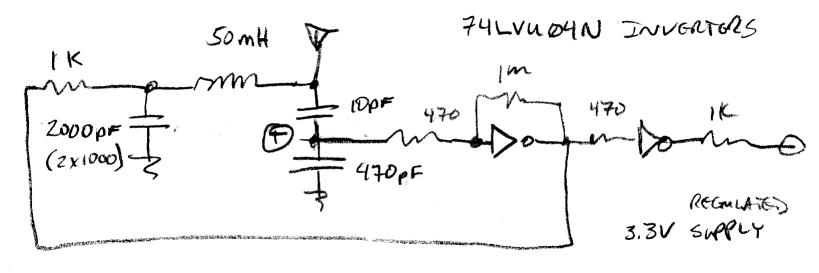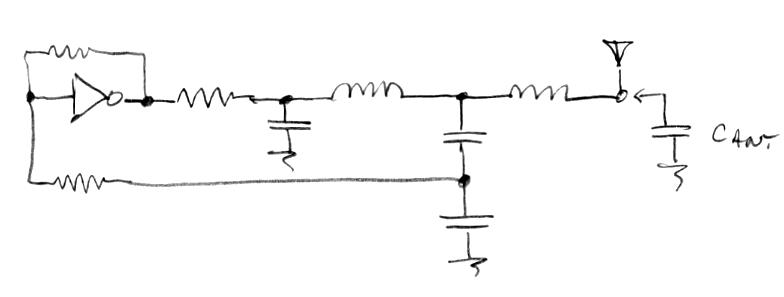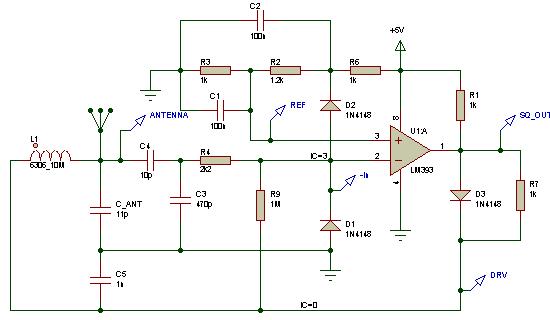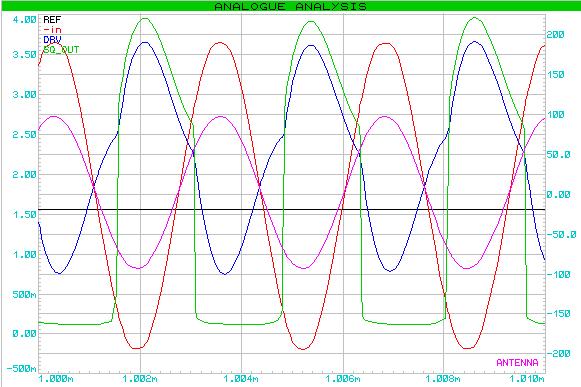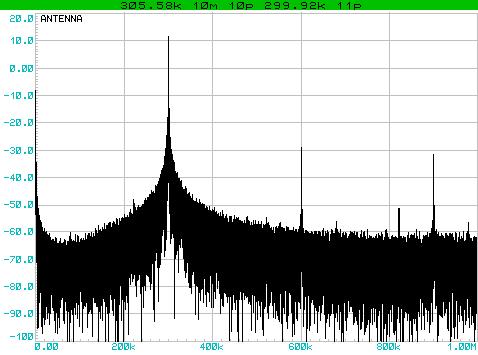Hi Urs,
Thanks for not taking offense at my technical nitpicking, I suppose I'm too passionate about the subject of Theremin circuit design.
Since you are using CMOS logic in your oscillators, have you had a look at the Andre Smirnov circuit? http://asmir.theremin.ru/tsensors_sch.htm

Until I really understood inductors I couldn't say the circuit made a lot of intuitive sense to me. Now that I do it strikes me as quite elegant, but I think it can be improved. The 6.2k 470 pF RC network gives a ~90 (?) degree phase lag, the inductor another 90 lag, and the inverters a further 180 degree lag, which in a loop gives oscillation. The 6.2k limits current drive, and therefor sets voltage swing at the antenna - I've had good results with 470 ohms here. The RC also kills a lot of harmonics in the drive which is a good thing. I'm not sure I would use an auto-transformer as it couples in the drive, but it probably does ensure start-up of oscillations. Instead, I'd try to use an independent small winding on the drive end of a Bourns 6300, and not load it down too much so as to keep sensitivity as high as possible. I would also add ESD protection to the environmentally coupled CMOS I/O (Littelfuse SP721 or similar) for long-term reliability. Finally, the string of 5 inverters seems kind of unnecessary, and I'd probably go with 74LVU04N which has much better drive, and use a 1M or so feedback resistor for stability and auto biasing about the theshold. (The unused 4069N inverter could have been ganged in parallel with the one doing the driving to get more drive current.) (Also: there is no requirement for symmetrical values with the two 470pF caps, if that works out best then fine, but it often doesn't, and you might actually want some capacitive voltage dividing going on here.)
The choice of inductors is a hugely critical factor IMO, with very few commercial offerings up to the task. Closed (i.e. no air gap) ferrites are unfortunately pretty much out due to temperature dependencies. The first defense against the need for aggressive TEMPCO is to avoid the use of temperature sensitive components in the first place.
I haven't looked at your software, but do you have a way to alter hand / note spacing? The general consensus here is that the wider the spacing the easier it is to play (lots of "playable octaves" are kind of like point-and-shoot megapixel counts - where more is often less). For my own designs I will be doing a log2 conversion on the pitch data to facilitate this (as well as linearization), and "undo" this with an exp2 function at the input to the NCO.
[EDIT] A few more thoughts regarding the Smirnov circuit above. The frequency dependent delay of the RC is problematic, as it means the circuit probably has to be tuned any time there is a change in bulk antenna capacitance (which is accomplished in the circuit via a ferrite slug in the coil). Also, the inverter string delay is significant and so I believe is being used as an element in the 360 degree phase loop, and transport delay through CMOS logic is highly temperature dependent.


